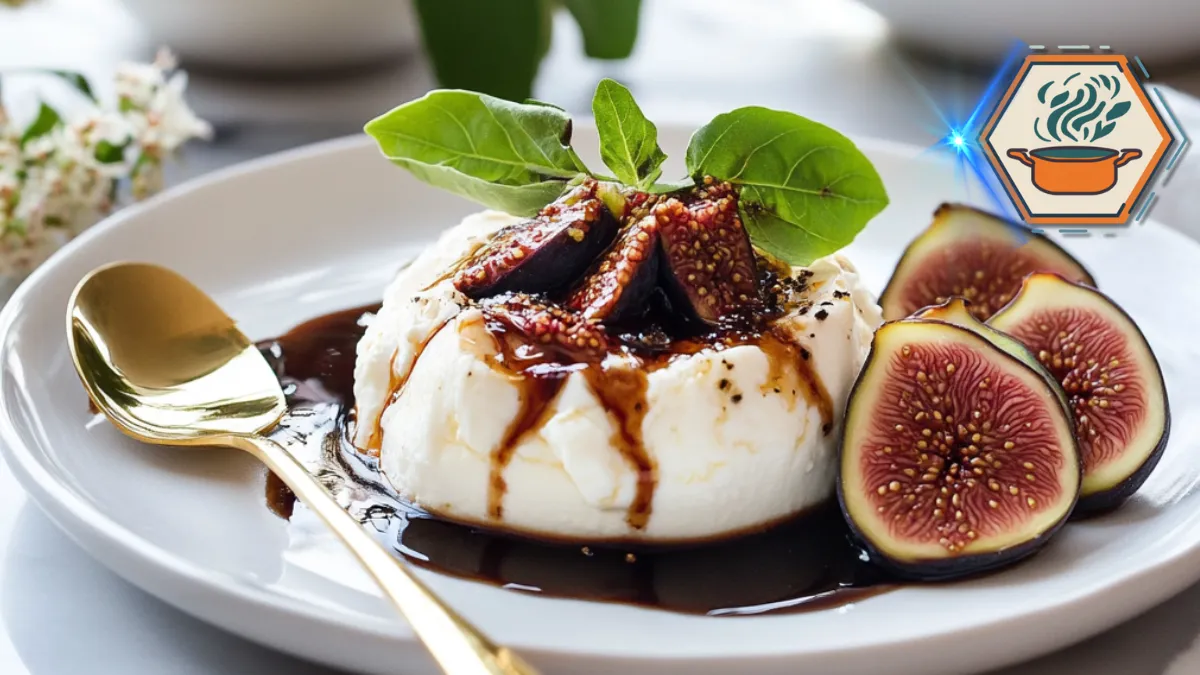Table of Contents
The Basics of Burrata Cheese
What is Burrata Cheese?
Using burrata cheese is one of the best ways to bring creaminess and richness to your meals. Its creamy center and the satisfying texture of a burrata melt make it an irresistible addition to both classic and modern recipes. Its unique texture and taste make it a favorite in Italian cuisine and beyond.
Origins of Burrata Cheese
Burrata originated in the Puglia region of southern Italy. Cheesemakers created it as a way to use leftover scraps of mozzarella. They wrapped these scraps with cream in a mozzarella pouch, forming the luscious cheese we know today. The name “burrata” comes from the Italian word “burro,” meaning butter, reflecting its rich texture.
How Burrata Cheese is Made
Making and using burrata cheese involves a few simple but precise steps that enhance your cooking experience :
- Fresh cow’s milk is curdled to create mozzarella.
- The mozzarella is stretched and shaped into a pouch.
- The pouch is filled with a mixture of cream and shredded mozzarella, known as stracciatella.
- It is sealed and soaked in brine to enhance its flavor.
For an in-depth look at how burrata compares to other cheeses, check out this guide.
Nutritional Facts and Benefits of Burrata Cheese
Using burrata cheese is not only delicious but also offers numerous nutritional benefits. It is rich in protein and calcium, essential for bone health. However, due to its creamy interior, it’s higher in fat compared to regular mozzarella. This makes burrata a treat best enjoyed in moderation.
- Calories: Approximately 300 per 100 grams
- Protein: Around 15 grams per 100 grams
- Fat: Roughly 25 grams per 100 grams
Key Characteristics of Burrata Cheese
Burrata Cheese Texture: Mozzarella Exterior vs. Creamy Interior
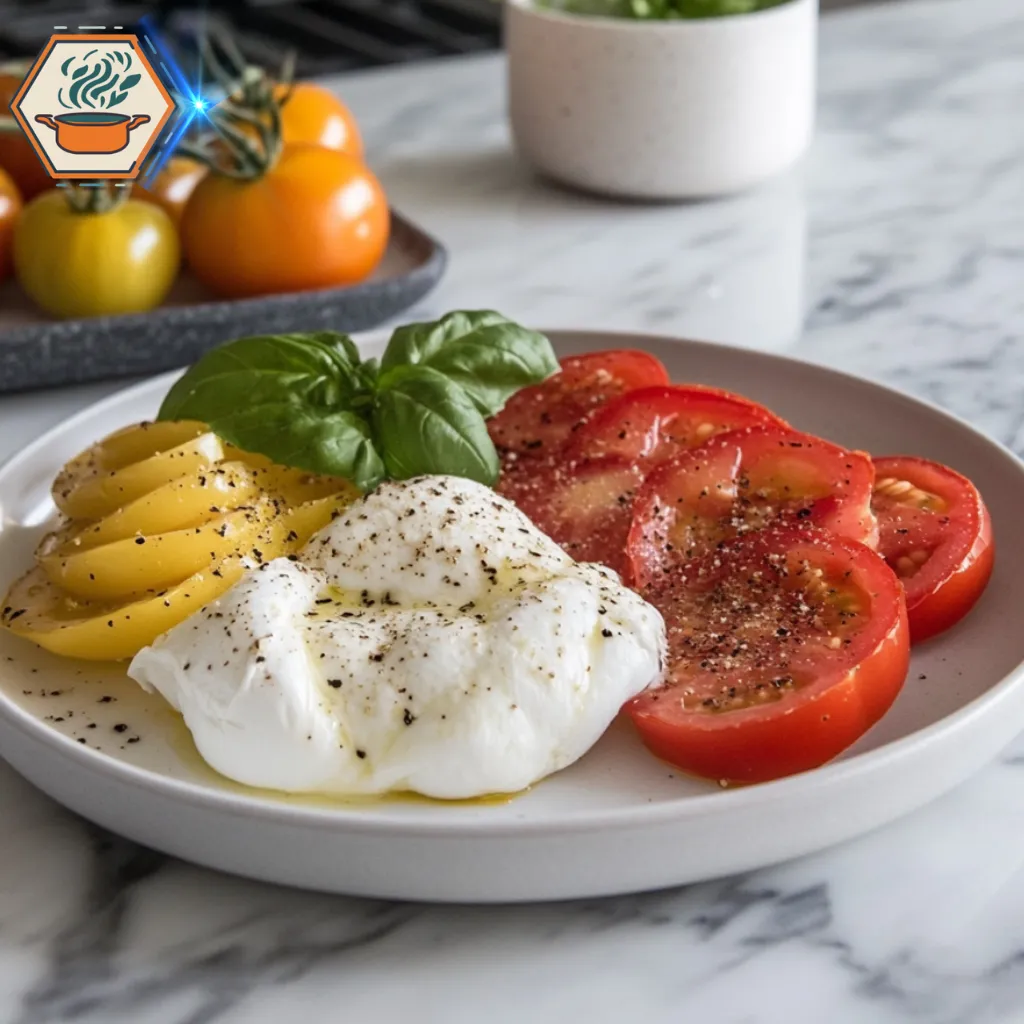
One of the standout features of burrata is its dual texture. The outer shell of burrata is firm and stretchy, and using burrata cheese adds this texture to various dishes. Inside, the stracciatella filling is soft, creamy, and slightly runny. This contrast creates a luxurious mouthfeel, making burrata a star ingredient in many dishes.
Burrata Cheese Flavor Profile: Mild and Rich
Burrata has a mild, milky flavor with a hint of sweetness. The creamy center adds a buttery richness that enhances the overall taste. Its delicate flavor pairs well with a variety of ingredients, from fresh tomatoes to roasted vegetables.
How to Select Fresh Burrata Cheese
Signs of Freshness in Burrata Cheese
When buying burrata, freshness is key. Here are some tips to ensure you’re getting the best quality:
- Look for a glossy exterior: The outer shell should appear smooth and shiny.
- Check the expiration date: Burrata is best when consumed within a few days of production.
- Press gently: When using burrata cheese, ensure it feels firm yet slightly springy to the touch for the best results.
Best Storage Practices for Burrata Cheese
To preserve its flavor and texture, store burrata properly:
- Keep it refrigerated in its original packaging or in a sealed container with brine.
- Consume it within 2-3 days for optimal freshness.
- Avoid freezing, as this can alter its creamy texture.
Why Burrata Cheese is Unique
What Sets Burrata Cheese Apart from Other Cheeses
Burrata stands out due to its combination of textures and its creamy interior. Unlike other cheeses, it offers a two-in-one experience: the firm mozzarella shell and the luscious stracciatella filling. This makes it versatile and ideal for both savory and sweet dishes.
Cultural Significance of Burrata Cheese in Italian Cuisine
In Italy, burrata is more than just a cheese—it’s a symbol of craftsmanship. It is often enjoyed as a standalone dish, drizzled with olive oil and paired with crusty bread. Its popularity has spread globally, becoming a staple in gourmet dining and home kitchens alike.
By understanding these basics of using burrata cheese, you can appreciate its unique qualities and make the most of it in your cooking.
Burrata and Heat: Exploring Its Unique Qualities
Using Burrata Cheese in cooking adds an indulgent, creamy touch to many dishes. This versatile Italian cheese has a delicate texture that changes when exposed to heat, making it an intriguing choice for warm recipes. In this section, we will uncover what happens to burrata under heat, compare it to other cheeses, and explore how to use it effectively in warm dishes.
Does Burrata Melt?
What Happens When Burrata is Exposed to Heat
Unlike cheeses such as cheddar or mozzarella, burrata doesn’t melt into a stringy or gooey consistency. Instead, the outer shell of mozzarella softens, while the creamy interior becomes even more luscious. The texture remains distinct, offering a creamy contrast to other ingredients. This makes burrata ideal for dishes where both soft and creamy elements are desired.
- Key Characteristics When Heated:
- The mozzarella shell becomes tender.
- The creamy core stays rich and velvety.
- The overall structure of burrata holds better than melting cheeses.
Learn more about the differences between creamy cheeses in our guide to Crème Brûlée vs. Custard.
Comparison to Other Cheeses Like Mozzarella
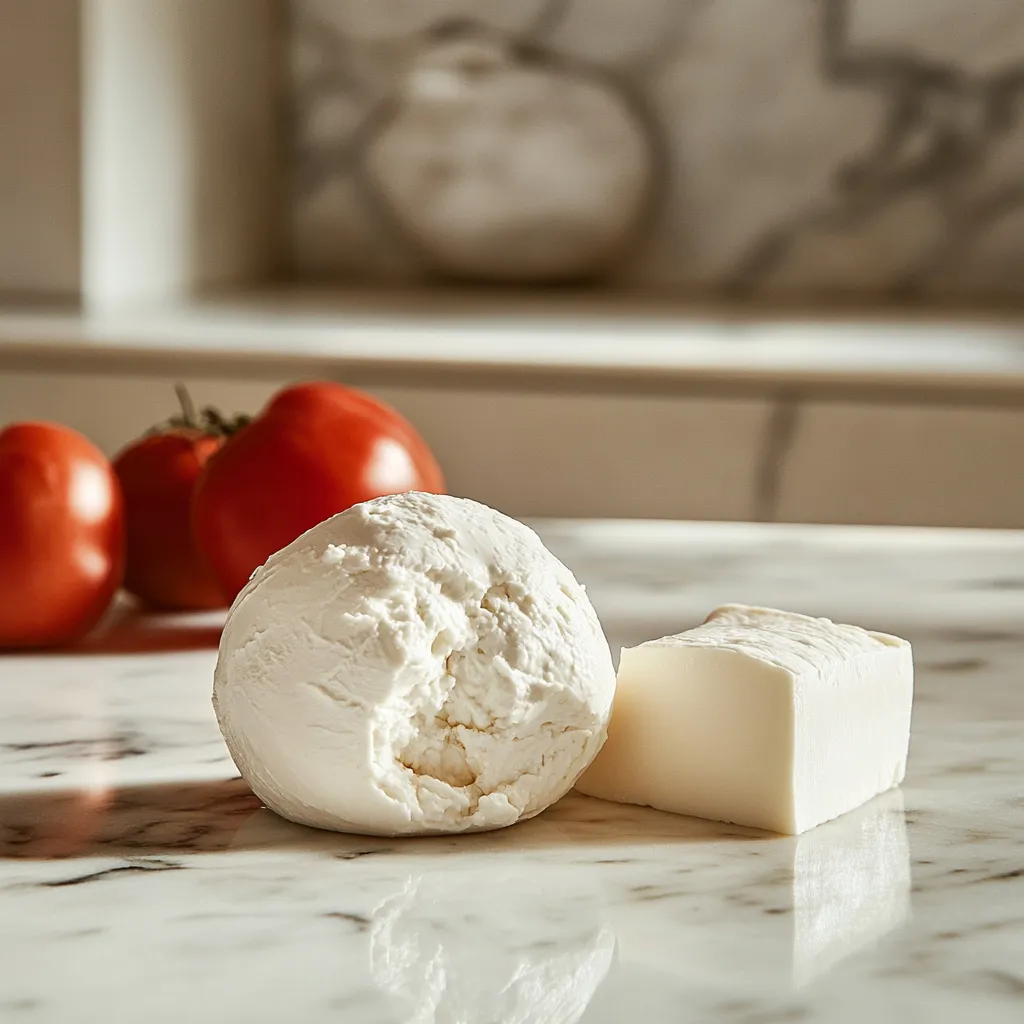
While both burrata and mozzarella share a similar outer shell, their heating properties differ:
- Mozzarella:
- Melts into stretchy strands, perfect for pizza or lasagna.
- Often used for its cohesive texture in baked dishes.
- Burrata:
- Retains its creamy center, making it unsuitable for dishes requiring full melting.
- Best suited for adding a creamy contrast rather than structural support.
This distinction allows chefs to use burrata creatively, showcasing its unique qualities in recipes.
How to Use Burrata in Warm Dishes
Adding to Hot Pizzas and Pasta
Using For best results when using burrata cheese, place it on the hot pizza right after removing it from the oven. Here’s how to use it:
- Pizza:
- Bake the pizza with traditional toppings first.
- Place the burrata on the hot pizza right after removing it from the oven.
- Allow the heat to soften the cheese, creating a luxurious topping.
- Pasta:
- Toss hot pasta with olive oil, fresh herbs, and vegetables.
- Top with burrata before serving to enjoy its creamy texture blending with the pasta.
Check out our Secret to Moist Lipton Onion Soup Meatloaf for ideas on adding richness to dishes.
Placing on Grilled Vegetables or Roasted Meats
Grilled and roasted dishes benefit immensely from the creamy addition of burrata:
- Grilled Vegetables:
- Add burrata to roasted zucchini, bell peppers, or eggplant for a creamy contrast.
- Drizzle with olive oil and sprinkle with fresh herbs like basil or oregano.
- Roasted Meats:
- Place burrata alongside roasted chicken or beef to balance the dish’s savory flavors.
- Serve immediately to maintain its creamy integrity.
Common Cooking Mistakes with Burrata
Overheating and Losing Texture
Overheating when using burrata cheese is a common mistake that can ruin its texture. Excessive heat causes:
- The mozzarella shell to become too soft, leading to breakage.
- The creamy center to lose its silky consistency, resulting in a runny mess.
Tip: Always add burrata after the cooking process to preserve its unique qualities.
Misusing in Baked Dishes
Burrata is not ideal for baking as its texture doesn’t hold up under prolonged heat. Instead, use it as a finishing touch for baked dishes to maintain its creamy texture.
Balancing Burrata with Other Ingredients
Pairing It with Acidic, Sweet, or Savory Elements
The rich creaminess of burrata pairs well with a variety of flavors:
- Acidic: Tomatoes, balsamic vinegar, or citrus fruits cut through the cheese’s richness.
- Sweet: Honey or fresh fruits like figs and peaches complement its creamy texture.
- Savory: Prosciutto, olives, or anchovies add depth to burrata-focused dishes.
When to Add Burrata for the Best Results
To ensure burrata shines in your dishes:
- Add it just before serving to retain its creamy consistency.
- Let the dish’s residual heat gently soften the cheese without overheating.
- Experiment with layering flavors to highlight burrata’s creaminess and balance.
For detailed information on burrata cheese, including its origins, production methods, and culinary uses, consider exploring Britannica’s article on mozzarella. While the article primarily focuses on mozzarella, it provides insights into similar Italian cheeses, which can enhance your understanding of burrata.
Using burrata cheese can elevate any meal with its unique creamy and soft qualities. By understanding how it reacts to heat and pairing it thoughtfully, you can create delicious, sophisticated dishes that delight every palate.
Cooking with Burrata: Recipe Ideas
Using burrata cheese as a creamy, rich ingredient can elevate almost any dish. With its soft center and mild flavor, it pairs perfectly with fresh ingredients and bold flavors alike. In this section, we’ll explore the best ways to use Burrata cheese in recipes. These ideas are perfect for bringing sophistication and flavor to your meals.
Best Recipes Featuring Burrata
Burrata Caprese Salad
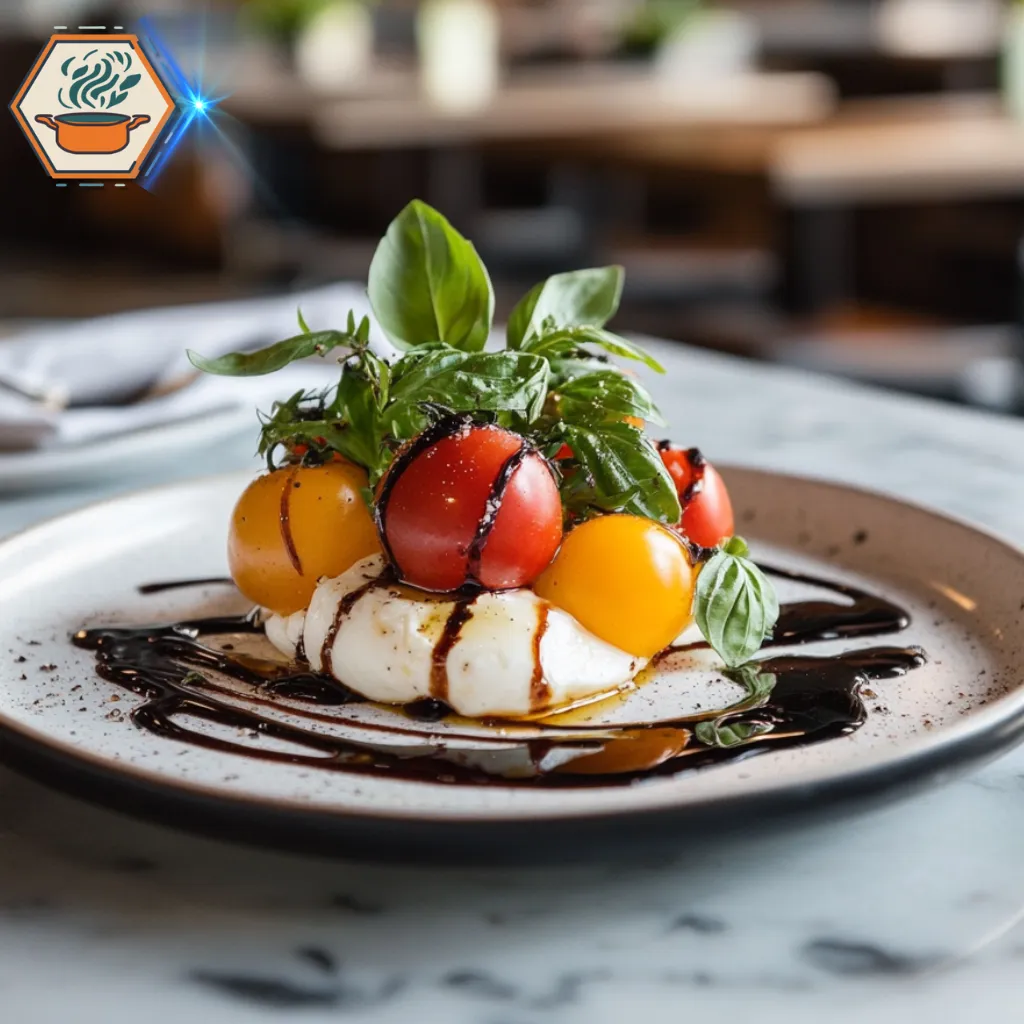
Using burrata cheese in a Caprese salad is a refreshing twist on the classic dish. Here’s how to make it:
- Ingredients:
- Fresh Burrata cheese
- Heirloom tomatoes, sliced
- Fresh basil leaves
- Olive oil
- Balsamic reduction
- Sea salt and cracked black pepper
- Instructions:
- Arrange the tomato slices on a platter.
- Place the Burrata in the center or break it into smaller pieces across the salad.
- Sprinkle basil leaves over the top.
- Drizzle with olive oil and balsamic reduction.
- Add salt and pepper to taste.
This simple yet elegant dish highlights the creamy texture of Burrata cheese and pairs well with crusty bread.
Burrata and Tomato Pasta
Burrata cheese adds a creamy finish to tomato pasta, creating a decadent yet easy-to-make dish.
- Ingredients:
- Pasta (spaghetti or fettuccine works best)
- Cherry tomatoes
- Garlic, minced
- Olive oil
- Fresh Burrata cheese
- Fresh basil
- Grated Parmesan (optional)
- Instructions:
- Cook the pasta according to the package instructions. Reserve 1 cup of pasta water.
- Heat olive oil in a pan and sauté garlic until fragrant.
- Add cherry tomatoes and cook until they burst.
- Toss the cooked pasta with the tomato mixture, adding reserved pasta water as needed for a smooth consistency.
- Top with Burrata cheese and fresh basil leaves.
- Add grated Parmesan if desired.
The creamy Burrata balances the acidity of the tomatoes, creating a satisfying meal.
Grilled Flatbread with Burrata
Using burrata cheese on grilled flatbread creates a quick and flavorful appetizer. or meal.
- Ingredients:
- Store-bought flatbread or pizza dough
- Olive oil
- Burrata cheese
- Arugula
- Prosciutto
- Balsamic glaze
- Instructions:
- Brush the flatbread with olive oil and grill it until lightly charred.
- Spread Burrata cheese over the warm flatbread.
- Top with arugula, prosciutto, and a drizzle of balsamic glaze.
This dish is ideal for casual gatherings and pairs well with a glass of wine.
Using Burrata as a Garnish
Adding It to Soups or Stews
Using Burrata cheese as a garnish in soups or stews creates a luxurious finish. After serving the dish, place a small piece of Burrata on top. The heat will slightly melt the cheese, blending its creaminess into the dish. Great options include:
- Tomato soup
- Lentil stew
- Creamy mushroom soup
Topping Casseroles or Baked Dishes
For a unique twist, add Burrata cheese to casseroles or baked dishes right before serving. Try it on:
- Eggplant Parmesan
- Baked ziti
- Roasted vegetable gratin
The creamy texture contrasts with the crisp toppings, adding depth to the meal.
Pairing Burrata with Unique Ingredients
Figs, Balsamic Glaze, and Honey
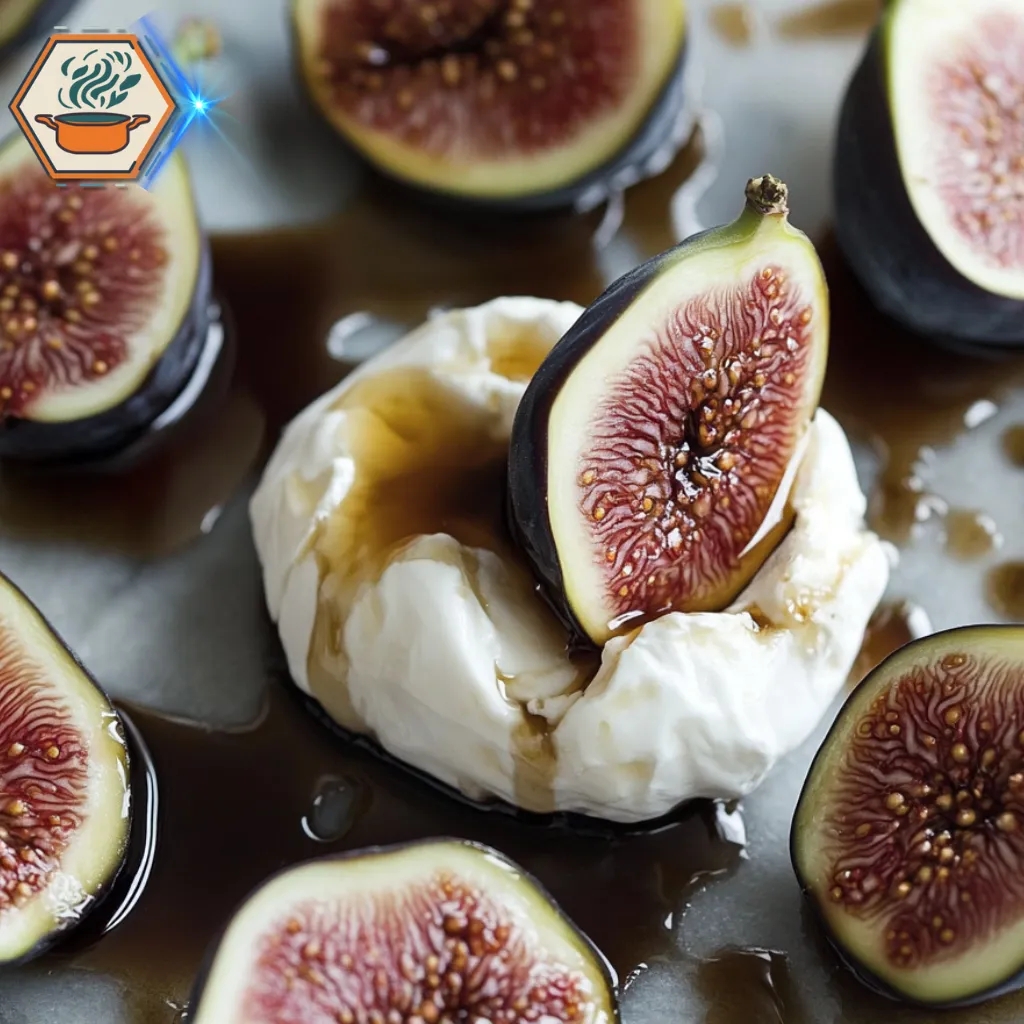
One of the most delicious ways to enjoy Burrata cheese is with figs, balsamic glaze, and honey. This pairing creates a balance of sweet, tangy, and creamy flavors. Serve it as an appetizer or dessert with the following:
- Fresh or roasted figs
- A drizzle of honey
- A splash of aged balsamic vinegar
Burrata with Smoked Salmon
Pairing Burrata cheese with smoked salmon makes an elegant brunch or appetizer. Combine:
- Slices of smoked salmon
- Burrata cheese
- Capers
- Dill
- Lemon wedges
Serve on a toasted baguette for a stunning presentation.
Tips for Creative Burrata Dishes
Using It in Appetizers Like Crostini
Burrata cheese is perfect for crostini. Spread it over toasted baguette slices and top with:
- Sautéed mushrooms
- Pesto and sun-dried tomatoes
- Roasted red peppers
Incorporating It in Brunch Dishes
Burrata cheese shines in brunch recipes. Add it to:
- Avocado toast
- Omelets or frittatas
- Breakfast pizzas with eggs and vegetables
For a comprehensive overview of various cheese types, including their characteristics and production methods, consider exploring Britannica’s article on cheese. This resource provides detailed insights into the diverse world of cheeses, enhancing your culinary knowledge.
Burrata in Fusion Dishes
Incorporating Burrata into Global Cuisines
Using Burrata Cheese has transformed modern cooking. This creamy Italian cheese is now a star ingredient in kitchens around the world. Chefs are blending burrata into diverse cuisines, creating innovative dishes that delight the palate. By merging traditional recipes with burrata’s rich texture, they craft meals that are both familiar and exciting.
Transitioning from its Italian roots, burrata finds a place in unexpected culinary traditions. Its mild flavor makes it a versatile addition, enhancing dishes without overpowering them. The fusion of burrata with global ingredients showcases the cheese’s adaptability and the creativity of modern chefs.
Burrata in Mexican and Asian-Inspired Dishes
In Mexican cuisine, burrata adds a luxurious touch to classic dishes. Imagine a burrata-topped tostada, where the cheese melts over spicy beans and fresh salsa. The creaminess balances the heat, creating a harmonious flavor profile. Burrata also complements ingredients like avocado, cilantro, and lime, bringing a new dimension to Mexican favorites.
Asian-inspired dishes benefit from burrata’s unique texture. In Japanese cuisine, burrata can be paired with soy-glazed vegetables or wrapped in nori for a fusion sushi roll. In Thai dishes, it melds with flavors like lemongrass and coconut milk. The cheese enhances the umami taste, making stir-fries and curries more indulgent.
By incorporating burrata into these global cuisines, chefs honor traditional flavors while introducing a delightful twist. The result is a dining experience that is both comforting and novel, appealing to adventurous food lovers.
Burrata and Food Trends
Why Burrata Has Become a Popular Choice for Chefs
The culinary world is ever-evolving, and using burrata cheese has become a significant trend. Its rise in popularity is due to several factors. First, burrata’s visual appeal is undeniable. When sliced open, it reveals a creamy interior that oozes onto the plate. This makes it a favorite for food photography and social media sharing.
Moreover, burrata’s versatility allows chefs to experiment. It can be served cold in salads or warmed slightly to enhance its creaminess. Its delicate flavor complements a wide range of both sweet and savory ingredients.
Chefs appreciate how burrata elevates a dish without requiring complex preparation.
The farm-to-table movement has also contributed to burrata’s popularity. As diners seek fresh and authentic ingredients, burrata stands out as an artisanal product. Its handmade nature and short shelf life emphasize quality and craftsmanship, aligning with contemporary dining values.
Burrata in Plant-Based and Sustainable Dining
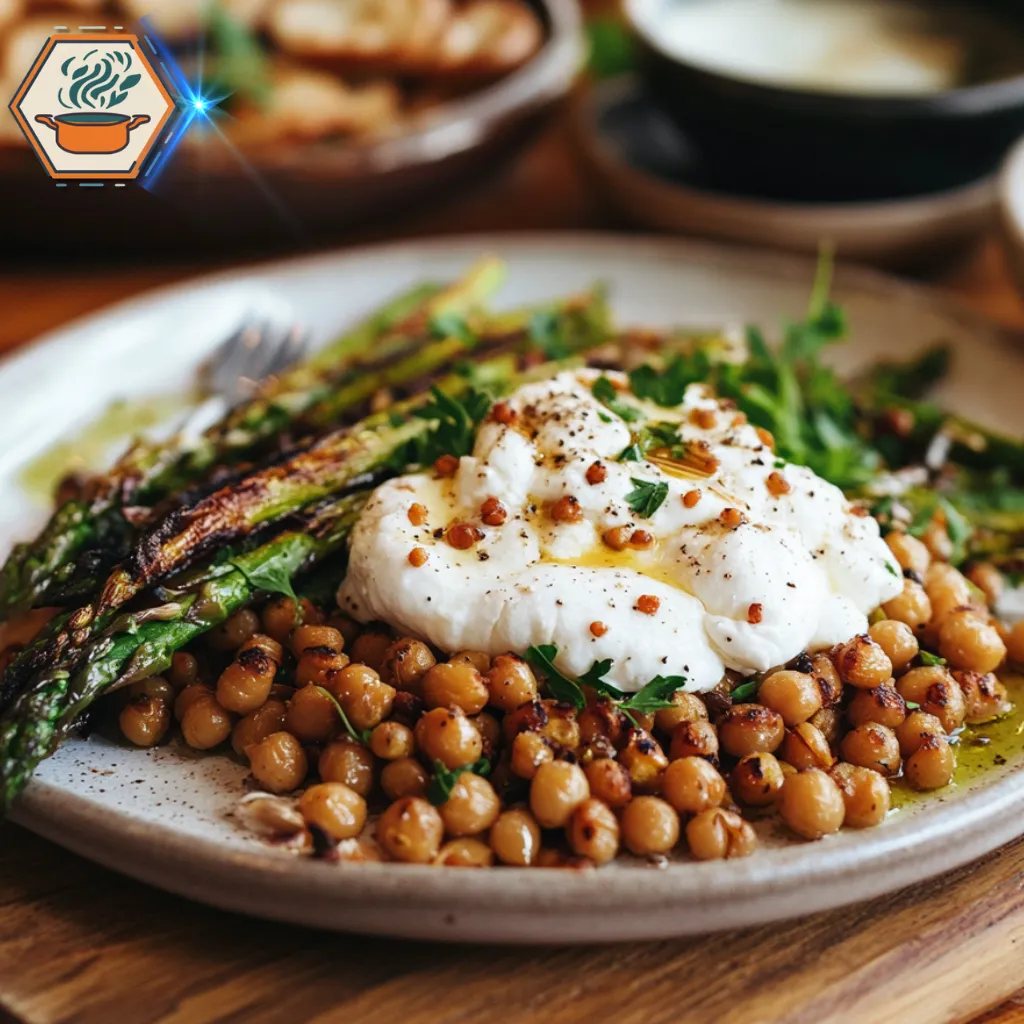
While burrata is a dairy product, it plays a role in plant-based and sustainable dining trends. Vegetarian dishes benefit from burrata’s richness, providing a satisfying alternative to meat. For instance, a simple tomato and burrata salad becomes a hearty meal with the addition of grains or legumes.
Sustainability has become an increasingly important focus within the food industry. Burrata producers are responding by adopting eco-friendly practices. Using organic milk, reducing waste, and supporting local farmers contribute to a more sustainable product. Diners who prioritize environmental responsibility appreciate these efforts.
Incorporating burrata into plant-based dishes encourages a more balanced diet. It allows for indulgence without compromising on health or ethics. As consumers become more conscious of their food choices, burrata offers a delightful option that aligns with modern values.
Burrata Comparisons
How Burrata Differs from Ricotta and Mascarpone
Understanding the differences between Italian cheeses enhances culinary exploration. Burrata, ricotta, and mascarpone each have distinct characteristics. Burrata features a mozzarella shell filled with stracciatella and cream, giving it a unique combination of textures. Its exterior is firm, while the inside is soft and creamy.
Ricotta is made from whey, resulting in a grainy texture and mild taste. It’s often used in fillings for pasta or desserts like cannoli. Mascarpone is a rich, creamy cheese with a higher fat content. It’s smooth and spreadable, commonly used in desserts like tiramisu.
Using burrata cheese offers a different experience compared to ricotta or mascarpone. Its combination of textures adds complexity to dishes. Knowing when to choose burrata over other cheeses depends on the desired outcome. Using burrata cheese shines when both texture and presentation are essential in gourmet dishes.
When to Use Burrata vs. Mozzarella
Mozzarella and burrata share similarities but serve different purposes. Mozzarella is firm and elastic, ideal for melting on pizzas or layering in lasagna. It’s also perfect for caprese salads when a more solid texture is preferred.
Burrata, with its creamy center, is best enjoyed fresh. It adds luxury to simple dishes like crusty bread or fresh greens. When a dish benefits from a rich, creamy element, using burrata cheese is the optimal choice.
Selecting between burrata and mozzarella depends on the dish’s needs. For structure and meltability, mozzarella is suitable. For creaminess and indulgence, burrata is unmatched. Understanding these differences allows for more intentional and satisfying cooking.

